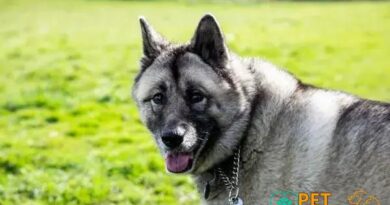O que é k9 communication
What is K9 Communication?
K9 communication refers to the intricate ways in which dogs communicate with humans and other dogs. This form of communication encompasses a variety of signals, including vocalizations, body language, and even facial expressions. Understanding K9 communication is essential for dog owners and trainers, as it fosters a deeper bond between humans and their canine companions.
The Importance of Body Language in K9 Communication
Body language plays a crucial role in K9 communication. Dogs use their posture, tail position, and ear orientation to convey their feelings and intentions. For instance, a wagging tail does not always indicate happiness; it can also signify excitement or nervousness. Recognizing these subtle cues can help owners respond appropriately to their dogs’ needs and emotions.
Vocalizations: The Sounds of K9 Communication
Vocalizations are another key aspect of K9 communication. Dogs bark, growl, whine, and howl to express a range of emotions, from excitement to fear. Each sound has its own meaning, and understanding these vocalizations can provide insight into what a dog is experiencing. For example, a high-pitched bark may indicate playfulness, while a low growl could signal discomfort or aggression.
Facial Expressions and Their Significance
Facial expressions are often overlooked in K9 communication, yet they are vital for understanding a dog’s emotional state. Dogs can display a variety of expressions, such as relaxed eyes, raised eyebrows, or a closed mouth, which can indicate their mood. Observing these facial cues can help owners gauge how their dogs are feeling in different situations.
The Role of Socialization in K9 Communication
Socialization is essential for effective K9 communication. Dogs that are well-socialized are more adept at interpreting the signals of other dogs and humans. This ability to read social cues can prevent misunderstandings and reduce the likelihood of aggressive encounters. Early socialization helps dogs become more confident and adaptable in various environments.
Training and K9 Communication
Training plays a significant role in enhancing K9 communication. Positive reinforcement techniques can help dogs learn to associate specific commands with desired behaviors. This not only improves obedience but also strengthens the bond between the dog and its owner. A well-trained dog is more likely to communicate effectively, leading to a harmonious relationship.
Common Misinterpretations in K9 Communication
Many dog owners may misinterpret their pets’ signals, leading to confusion or conflict. For example, a dog that approaches with a wagging tail may not always be friendly; it could be feeling anxious or overstimulated. Understanding the context of a dog’s behavior is crucial for accurate interpretation and response.
The Impact of Environment on K9 Communication
The environment plays a significant role in K9 communication. Dogs may behave differently in familiar settings compared to new or stressful environments. Factors such as noise, crowds, and the presence of other animals can influence a dog’s ability to communicate effectively. Being aware of these environmental factors can help owners better support their dogs in various situations.
Building a Stronger Bond Through K9 Communication
Ultimately, understanding K9 communication can lead to a stronger bond between dogs and their owners. By recognizing and responding to their dogs’ signals, owners can create a more trusting and harmonious relationship. This mutual understanding enhances the overall well-being of both the dog and the owner, fostering a happier and healthier companionship.



